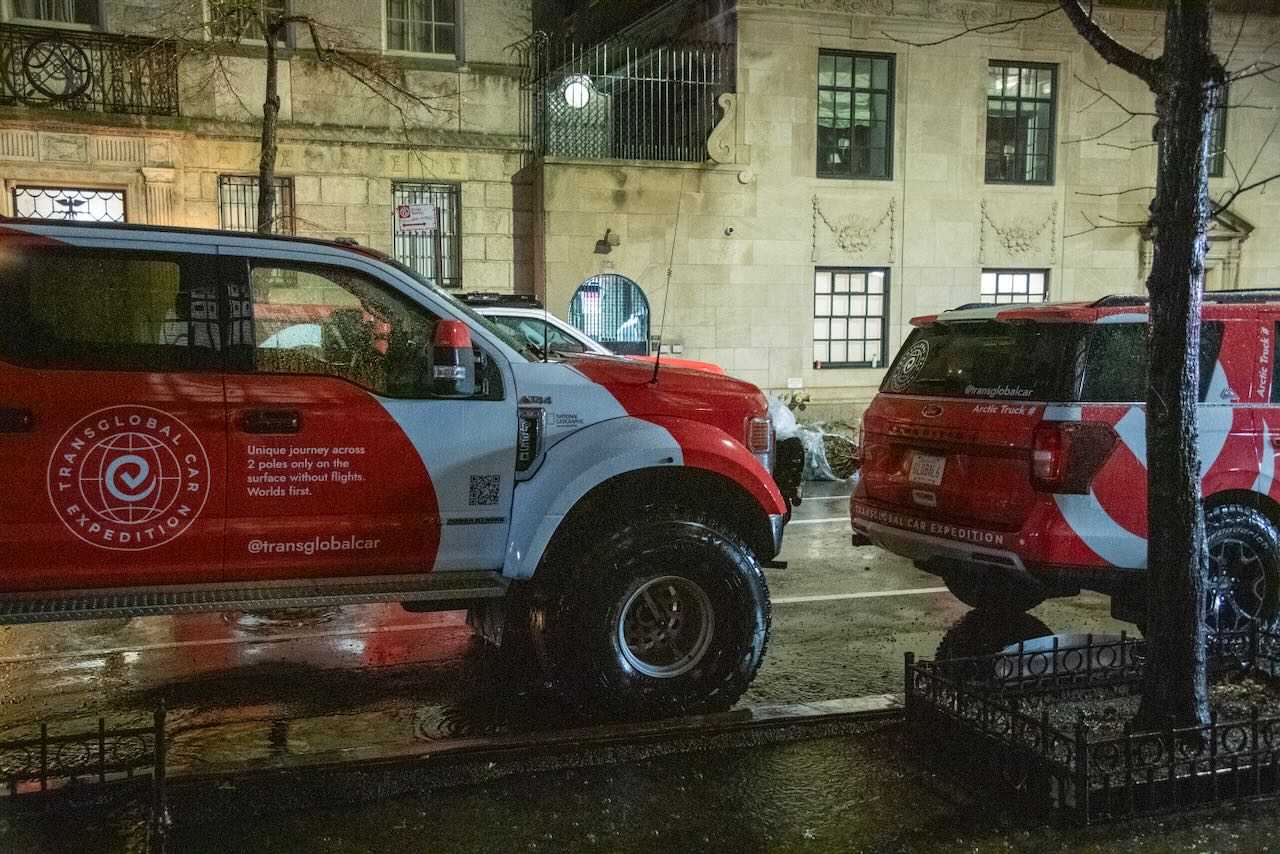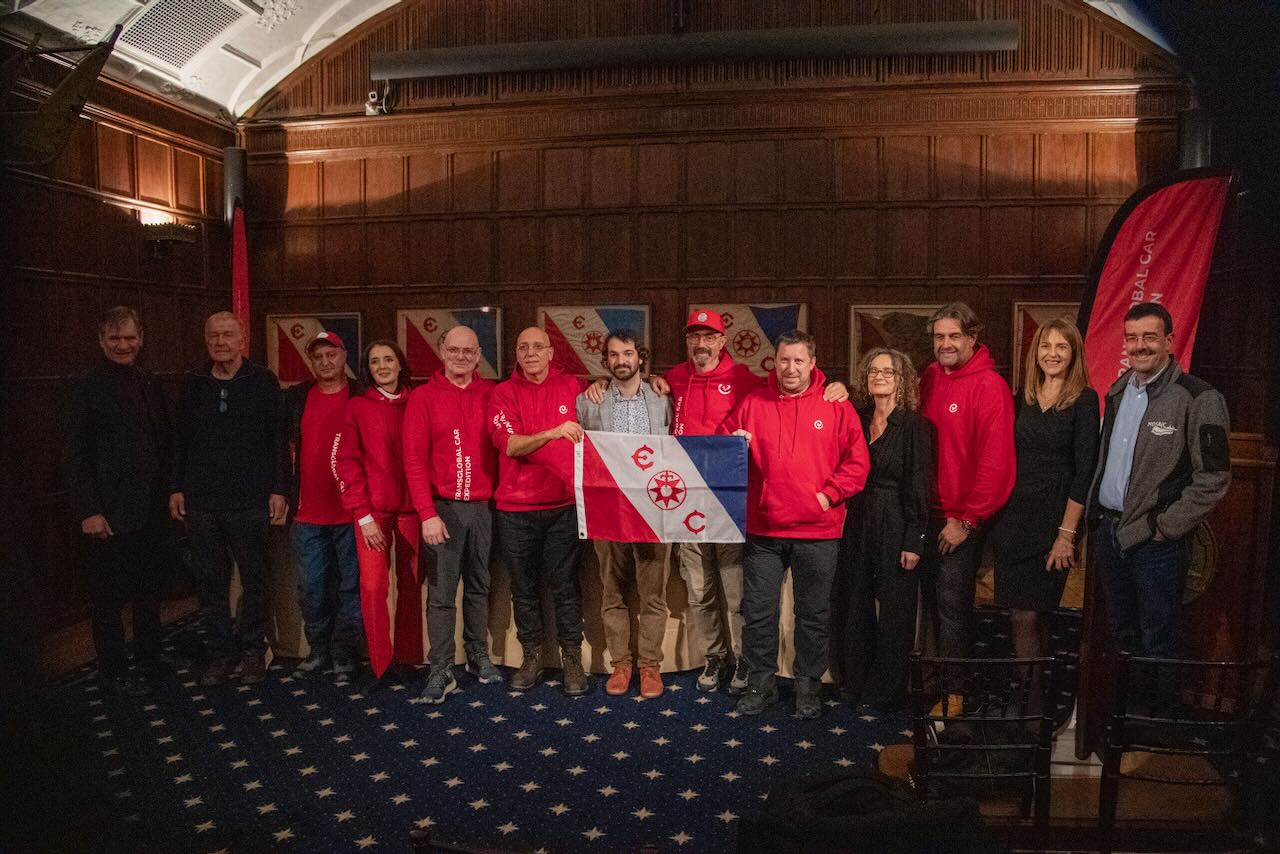On January 9th, the Transglobal Car Expedition set off from a rainy New York City on an extraordinary 18-month adventure—the first wheeled surface circumnavigation of the Earth through both geographic poles. Utilizing three different types of off-road vehicles, a team comprised of some of the world’s best polar explorers will attempt a journey that combines challenging ice crossings with some of the world’s great trans-continental overland routes.

The expedition has a core team of eight members, with others joining for various segments. The team leader is explorer and mountaineer Vasily Shakhnovskiy. Also along are two of the world’s most experienced polar vehicle builders: Emil Grimsson of Arctic Trucks and Vasily Elagin, creator of the Yemelya—a lightweight, floating, live-aboard transport explicitly designed for the poles. These two men have built every wheeled vehicle that has traveled the Arctic above the continental shelf. Grimsson created several different Ford trucks that form the expedition fleet: classic Arctic Trucks 6×6 F-350s, an F-150 Hybrid, and a set of Expeditions for the long transits across Europe, Africa, and the Americas.
The expedition set off from The Explorers Club in New York City, a gathering place for the world’s expedition leaders since 1904. On a cold and rainy night, the Arctic Trucks-prepared vehicles looked out of place parked on the streets of the Upper East Side. But by the end of January, they’ll be right at home in the Canadian north, heading across the permafrost and ice to Cambridge Bay in Nunavut. From there, the team will transition to the Yemelyas for the North Pole sector.

After crossing the North Pole and Greenland, the team will shift to the Ford Expeditions and drive across Iceland, Europe, and Central Asia before heading across the Arabian Peninsula. They’ll ship the vehicles to Africa and continue to Cape Town, where they’ll fly to Antarctica and rejoin the Yemelyas and Arctic Trucks 6×6 vehicles. After driving to the South Pole and exiting Antarctica via a never-before-traversed route to Cape Jeremy, the final leg will be a run North on the Pan-American Highway, wrapping up back in New York City in May 2025.
While the expedition’s route is an achievement on its own, there is a second goal: to collect scientific data that will give us insight into our changing planet. The areas the expedition will traverse in the polar regions are rarely traveled overland and hold information that will help scientists understand climate change. Experiments will measure ice conditions, cosmic rays, biological changes in humans in extreme conditions, and light pollution. In the Arctic, the expedition will travel across about 2,000 kilometers of old pack ice, and the Yemelyas will tow data-collecting trailers to create a valuable trove of data on ice thickness, which will be more detailed than what satellites can provide. Citizen science is also part of the program, with expedition followers invited to participate in several smartphone-driven data-gathering projects.

To keep up with the Transglobal Car Expedition, check out their website, Instagram, and Facebook.
Read more: What the Pole-to-Pole Expedition Wants You to Know About Long-Term EV Travel
Our No Compromise Clause: We do not accept advertorial content or allow advertising to influence our coverage, and our contributors are guaranteed editorial independence. Overland International may earn a small commission from affiliate links included in this article. We appreciate your support.


